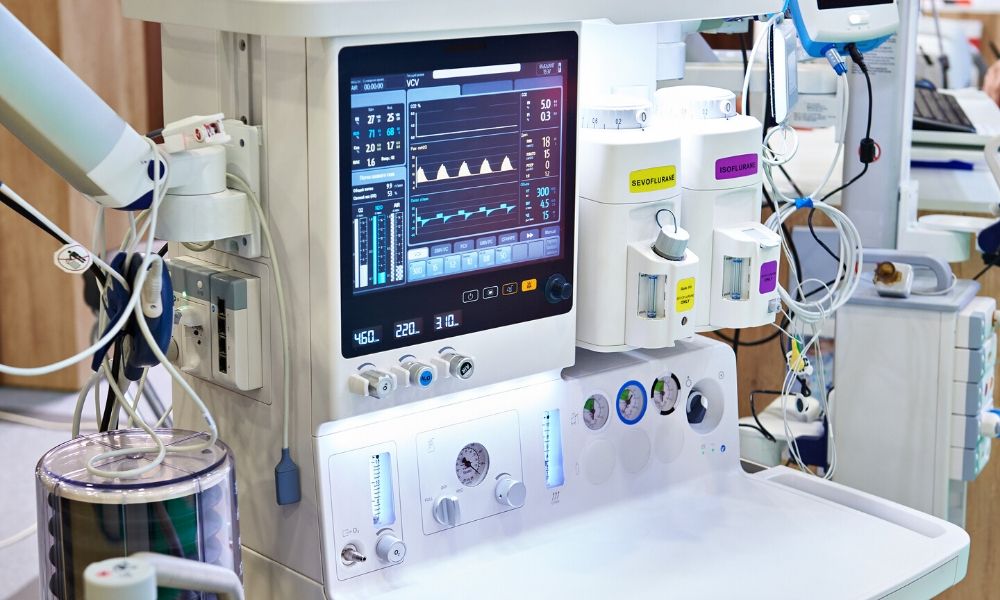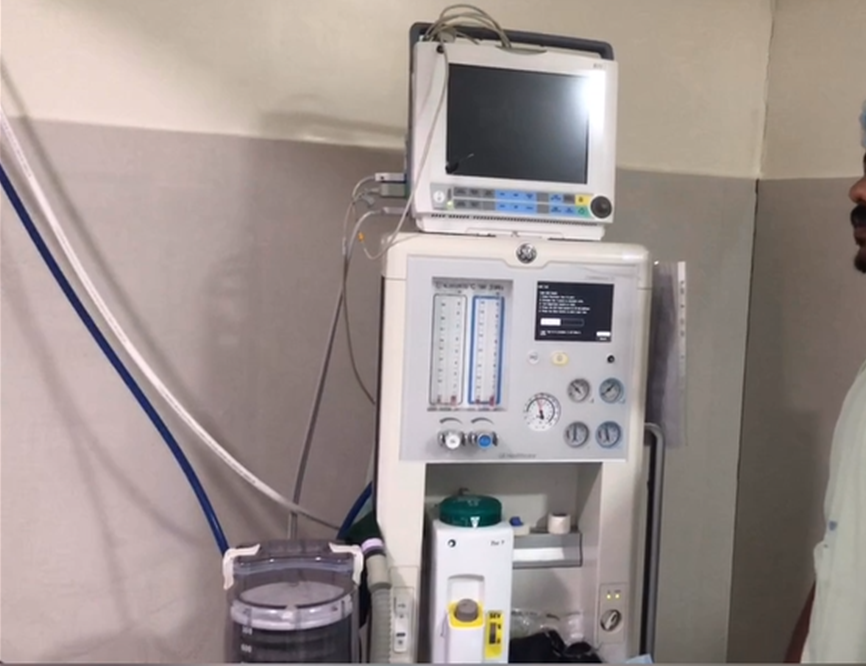Anesthesia machines are super important in surgeries. They’re like the unsung heroes in operating rooms. These machines help doctors make sure patients are safely asleep during surgery. They mix and deliver special gases that keep patients pain-free and unconscious. Plus, they watch over patients’ vital signs like heart rate and breathing. This monitoring is crucial for keeping patients safe. Anesthesia machines have evolved a lot, becoming more advanced and user-friendly. They play a big part in making surgeries successful and safe. Without them, modern surgery as we know it wouldn’t be possible!
What are Anesthesia Machines?
Anesthesia machines are super important in hospitals, especially during surgeries. They help doctors put patients to sleep safely for their operations. These machines control the mix of gases, like oxygen and anesthetics, that patients breathe in. This way, patients stay asleep and pain-free during surgery. The machines also monitor patients’ breathing to make sure they’re okay. They have screens and dials that let doctors adjust everything just right. Anesthesia machines are like helpful assistants in the operating room, ensuring surgeries go smoothly and patients stay comfortable. They play a big role in making surgeries safe and successful!

How do anesthesia machines work?
Anesthesia machines are like the superheroes of the operating room, working behind the scenes to ensure surgeries are safe and pain-free. Let’s how these amazing machines work, in an easy-to-understand and friendly way.
First, the heart of the anesthesia machine is its ability to mix different gases, mainly oxygen and anesthetic gases. These gases help patients fall asleep and stay pain-free during surgery. The machine has special tanks filled with these gases, and it carefully controls how much of each gas goes to the patient.
The machine has a breathing circuit. This is a set of tubes that carry the gas mix from the machine to the patient. Patients breathe in this mix through a mask or a tube. The breathing circuit is smart; it can adjust to how the patient breathes, making sure they get just the right amount of anesthesia.
One cool part of the anesthesia machine is the vaporizer. It turns liquid anesthetics into a gas that mixes with the oxygen. The doctor can control the vaporizer, deciding how much anesthetic the patient needs. This control is crucial for keeping the patient safely asleep.
The machine also has a bunch of monitors. These monitors keep an eye on important things like the patient’s heart rate, blood pressure, and how much oxygen is in their blood. This monitoring helps doctors make sure the patient is stable and reacting well to the anesthesia.
A neat feature is the ventilator. This part of the machine helps patients breathe if they need it. During some surgeries, patients might need help with their breathing. The ventilator gently pushes air into the lungs, keeping the patient’s breathing steady and safe.
Safety is a big deal with anesthesia machines . They have lots of safety features, like alarms. If something’s not right, like if the oxygen level gets too low, the machine will let the doctors know right away.
What Does the Anesthesia Machine Consist Of?
Anesthesia machines are like the control centers for keeping patients asleep and comfortable during surgery. Let’s break down what they consist of in a simple and friendly way:
Gas Supply: This includes tanks of oxygen and anesthetic gases. They’re the main ingredients for keeping patients asleep.
Vaporizers: These turn liquid anesthetics into a breathable gas. Doctors can adjust them to control how much anesthetic the patient gets.
Flowmeters: These measure and control the flow of gases from the machine to the patient. They ensure the right mix and amount of gases.
Breathing Circuit: It’s a set of tubes that carry the gas mix to the patient. It can be a mask or a tube and adjusts to the patient’s breathing.
Ventilator: This helps patients breathe during surgery, especially if they need extra help. It’s like a gentle push for their lungs.
Monitors: These are super important. They track the patient’s heart rate, blood pressure, oxygen levels, and more. They help doctors keep an eye on how the patient is doing.
Safety Features: Alarms and safety systems are built in to alert doctors if something’s not right, like low oxygen levels.
Controls and Dials: These let doctors adjust everything from gas flow to anesthetic levels. They’re like the command buttons for the machine.
Scavenging System: This removes any unused or excess gases, keeping the operating room safe and clean.
Backup Systems: Just in case, there are backup power and gas supply systems to ensure everything keeps running smoothly.
Anesthesia machines are packed with different parts, each playing a key role in patient care. From mixing gases to monitoring vital signs and ensuring safety, these machines are essential in making surgeries successful and safe.

The advantage of anesthesia machines
Anesthesia machines are incredible pieces of medical equipment that play a crucial role in surgeries. Let’s explore their advantages in a clear and friendly manner:
Precise Control Over Anesthesia: Anesthesia machines allow doctors to precisely control the amount of anesthesia a patient receives. This precision is key for patient safety and comfort.
Continuous Monitoring: They continuously monitor vital signs like heart rate, oxygen levels, and blood pressure. This monitoring helps doctors keep patients safe throughout the surgery.
Versatility for Different Procedures: These machines can adapt to different types of surgeries. They can handle everything from minor procedures to major operations.
Support for Patients’ Breathing: The built-in ventilator supports patients’ breathing when needed. This support is especially important in long surgeries or when patients can’t breathe on their own.
Safety Features: Anesthesia machines have alarms and safety systems. These features alert doctors quickly if there’s a problem, like low oxygen levels.
Efficiency and Time-Saving: By automating anesthesia delivery and monitoring, these machines save time. This efficiency is crucial in busy operating rooms.
Reduced Risk of Anesthesia Awareness: Because of their precise control, these machines reduce the risk of patients becoming aware during surgery.
Customizable for Patient Needs: Doctors can customize the mix of gases and anesthetics for each patient. This customization means personalized care based on individual needs.
Environmentally Friendly Options: Modern anesthesia machines often have features that reduce the waste of anesthetic gases, making them more environmentally friendly.
Backup Systems for Reliability: They come with backup power and gas supply systems. These backups ensure the machine keeps working even if there’s a power outage or gas supply issue.
Training and Simulation Features: Some advanced machines have simulation capabilities for training purposes. This feature helps train new anesthesiologists in a safe, controlled environment.
Ease of Use and Ergonomics: They are designed for easy use, with intuitive controls and displays. This design helps anesthesiologists focus on patient care without unnecessary complications.
Anesthesia machines are a cornerstone of modern surgery, offering precise control, continuous monitoring, and essential safety features. They ensure that patients remain comfortably asleep, breathe properly, and stay safe during surgeries. These machines represent a harmonious blend of technology and patient care, making surgeries smoother and safer for everyone involved.
 Professional medical equipment supplier
Professional medical equipment supplier
